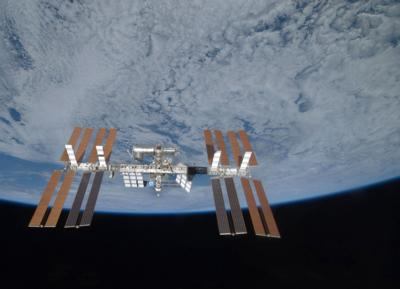Mon, Jun 14, 2021
The First Targeted Flight Opportunity Will Occur Between Fall Of 2022 And Mid-2023
NASA is seeking proposals for two new private astronaut missions to the International Space Station as part of the agency’s efforts to open space to more people than ever before. With these opportunities, US commercial companies will continue to play an essential role in establishing a sustained presence in low-Earth orbit (LEO) through the agency’s Commercial LEO Development Program.

The first targeted flight opportunity will occur between fall of 2022 and mid-2023 and the second will occur between mid-2023 and the end of 2023. Proposals are due Friday, July 9, 2021 at 5 p.m. EDT.
A private astronaut mission involves U.S. commercial spacecraft transporting private astronauts to the space station, where they conduct activities aboard the orbiting laboratory or a commercial structure attached to it. NASA is enabling up to two short-duration private astronaut missions per year.
“This year is truly a renaissance for human spaceflight both as we fly NASA and international partner astronauts on U.S. commercial crew spacecraft to the International Space Station and also as we see the expansion of private astronaut missions,” said Phil McAlister, director of commercial spaceflight development at NASA Headquarters. “As more people fly to space and do more things during their spaceflights, it attracts even more people to do more activities in low-Earth orbit, and reflects the growing market we envisioned when we began the Commercial Crew Program 10 years ago.”
The new targeted flight opportunities will be the second and third private astronaut missions to the International Space Station. NASA signed an agreement with Axiom Space for the first private astronaut mission, to take place no earlier than January 2022.
Each of the new missions may be up to 14 days. Specific dates are dependent on spacecraft traffic to the space station and in-orbit activity planning and constraints. Private astronaut missions must be brokered by a U.S. entity and use U.S. transportation spacecraft that meet NASA’s International Space Station visiting vehicle requirements, policies, and procedures.
More News
From 2021: The Inside Skinny On What Being An ANN Oshkosh Stringer Is All About By ANN Senior Stringer Extraordinare, Gene Yarbrough The annual gathering at Oshkosh is a right of p>[...]
Video Showed That During The Takeoff, The Nose Baggage Door Was Open On May 10, 2025, about 0935 eastern daylight time, a Piper PA-32RT-300, N30689, was destroyed when it was invol>[...]
Get The Latest in Aviation News NOW on Instagram Are you on Instagram yet? It's been around for a few years, quietly picking up traction mostly thanks to everybody's new obsession >[...]
"I think what is key, we have offered a bonus to air traffic controllers who are eligible to retire. We are going to pay them a 20% bonus on their salary to stay longer. Don't reti>[...]
Aero Linx: Pilot Briefing The gathering, translation, interpretation, and summarization of weather and aeronautical information into a form usable by the pilot or flight supervisor>[...]
 Oshkosh Memories: An Aero-News Stringer Perspective
Oshkosh Memories: An Aero-News Stringer Perspective NTSB Prelim: Piper PA32RT
NTSB Prelim: Piper PA32RT ANN FAQ: Follow Us On Instagram!
ANN FAQ: Follow Us On Instagram! Aero-News: Quote of the Day (05.28.25)
Aero-News: Quote of the Day (05.28.25) ANN's Daily Aero-Term (05.28.25): Pilot Briefing
ANN's Daily Aero-Term (05.28.25): Pilot Briefing



